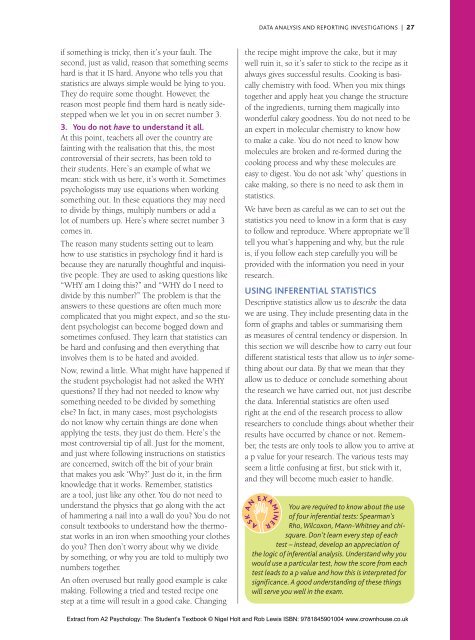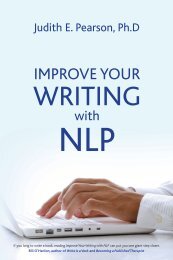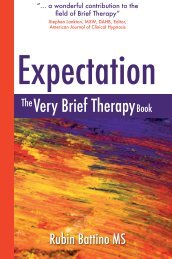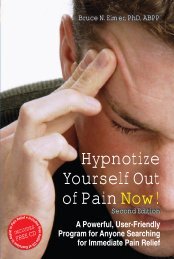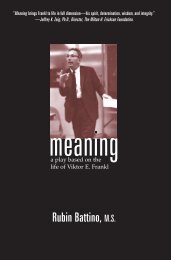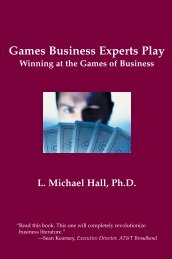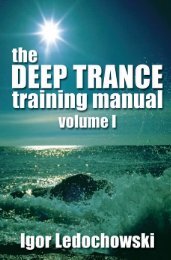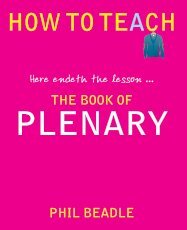Nigel Holt and Rob Lewis - Crown House Publishing.
Nigel Holt and Rob Lewis - Crown House Publishing.
Nigel Holt and Rob Lewis - Crown House Publishing.
You also want an ePaper? Increase the reach of your titles
YUMPU automatically turns print PDFs into web optimized ePapers that Google loves.
DATA ANALYSIS AND REPORTING INVESTIGATIONS | 27if something is tricky, then it’s your fault. Thesecond, just as valid, reason that something seemshard is that it IS hard. Anyone who tells you thatstatistics are always simple would be lying to you.They do require some thought. However, thereason most people find them hard is neatly sidesteppedwhen we let you in on secret number 3.3. You do not have to underst<strong>and</strong> it all.At this point, teachers all over the country arefainting with the realisation that this, the mostcontroversial of their secrets, has been told totheir students. Here’s an example of what wemean: stick with us here, it’s worth it. Sometimespsychologists may use equations when workingsomething out. In these equations they may needto divide by things, multiply numbers or add alot of numbers up. Here’s where secret number 3comes in.The reason many students setting out to learnhow to use statistics in psychology find it hard isbecause they are naturally thoughtful <strong>and</strong> inquisitivepeople. They are used to asking questions like“WHY am I doing this?” <strong>and</strong> “WHY do I need todivide by this number?” The problem is that theanswers to these questions are often much morecomplicated that you might expect, <strong>and</strong> so the studentpsychologist can become bogged down <strong>and</strong>sometimes confused. They learn that statistics canbe hard <strong>and</strong> confusing <strong>and</strong> then everything thatinvolves them is to be hated <strong>and</strong> avoided.Now, rewind a little. What might have happened ifthe student psychologist had not asked the WHYquestions? If they had not needed to know whysomething needed to be divided by somethingelse? In fact, in many cases, most psychologistsdo not know why certain things are done whenapplying the tests, they just do them. Here’s themost controversial tip of all. Just for the moment,<strong>and</strong> just where following instructions on statisticsare concerned, switch off the bit of your brainthat makes you ask ‘Why?’ Just do it, in the firmknowledge that it works. Remember, statisticsare a tool, just like any other. You do not need tounderst<strong>and</strong> the physics that go along with the actof hammering a nail into a wall do you? You do notconsult textbooks to underst<strong>and</strong> how the thermostatworks in an iron when smoothing your clothesdo you? Then don’t worry about why we divideby something, or why you are told to multiply twonumbers together.An often overused but really good example is cakemaking. Following a tried <strong>and</strong> tested recipe onestep at a time will result in a good cake. Changingthe recipe might improve the cake, but it maywell ruin it, so it’s safer to stick to the recipe as italways gives successful results. Cooking is basicallychemistry with food. When you mix thingstogether <strong>and</strong> apply heat you change the structureof the ingredients, turning them magically intowonderful cakey goodness. You do not need to bean expert in molecular chemistry to know howto make a cake. You do not need to know howmolecules are broken <strong>and</strong> re-formed during thecooking process <strong>and</strong> why these molecules areeasy to digest. You do not ask ‘why’ questions incake making, so there is no need to ask them instatistics.We have been as careful as we can to set out thestatistics you need to know in a form that is easyto follow <strong>and</strong> reproduce. Where appropriate we’lltell you what’s happening <strong>and</strong> why, but the ruleis, if you follow each step carefully you will beprovided with the information you need in yourresearch.Using inferential statisticsDescriptive statistics allow us to describe the datawe are using. They include presenting data in theform of graphs <strong>and</strong> tables or summarising themas measures of central tendency or dispersion. Inthis section we will describe how to carry out fourdifferent statistical tests that allow us to infer somethingabout our data. By that we mean that theyallow us to deduce or conclude something aboutthe research we have carried out, not just describethe data. Inferential statistics are often usedright at the end of the research process to allowresearchers to conclude things about whether theirresults have occurred by chance or not. Remember,the tests are only tools to allow you to arrive ata p value for your research. The various tests mayseem a little confusing at first, but stick with it,<strong>and</strong> they will become much easier to h<strong>and</strong>le.You are required to know about the useof four inferential tests: Spearman’sRho, Wilcoxon, Mann-Whitney <strong>and</strong> chisquare.Don’t learn every step of eachtest – instead, develop an appreciation ofthe logic of inferential analysis. Underst<strong>and</strong> why youwould use a particular test, how the score from eachtest leads to a p value <strong>and</strong> how this is interpreted forsignificance. A good underst<strong>and</strong>ing of these thingswill serve you well in the exam.Extract from A2 Psychology: The Student’s Textbook © <strong>Nigel</strong> <strong>Holt</strong> <strong>and</strong> <strong>Rob</strong> <strong>Lewis</strong> ISBN: 9781845901004 www.crownhouse.co.uk


